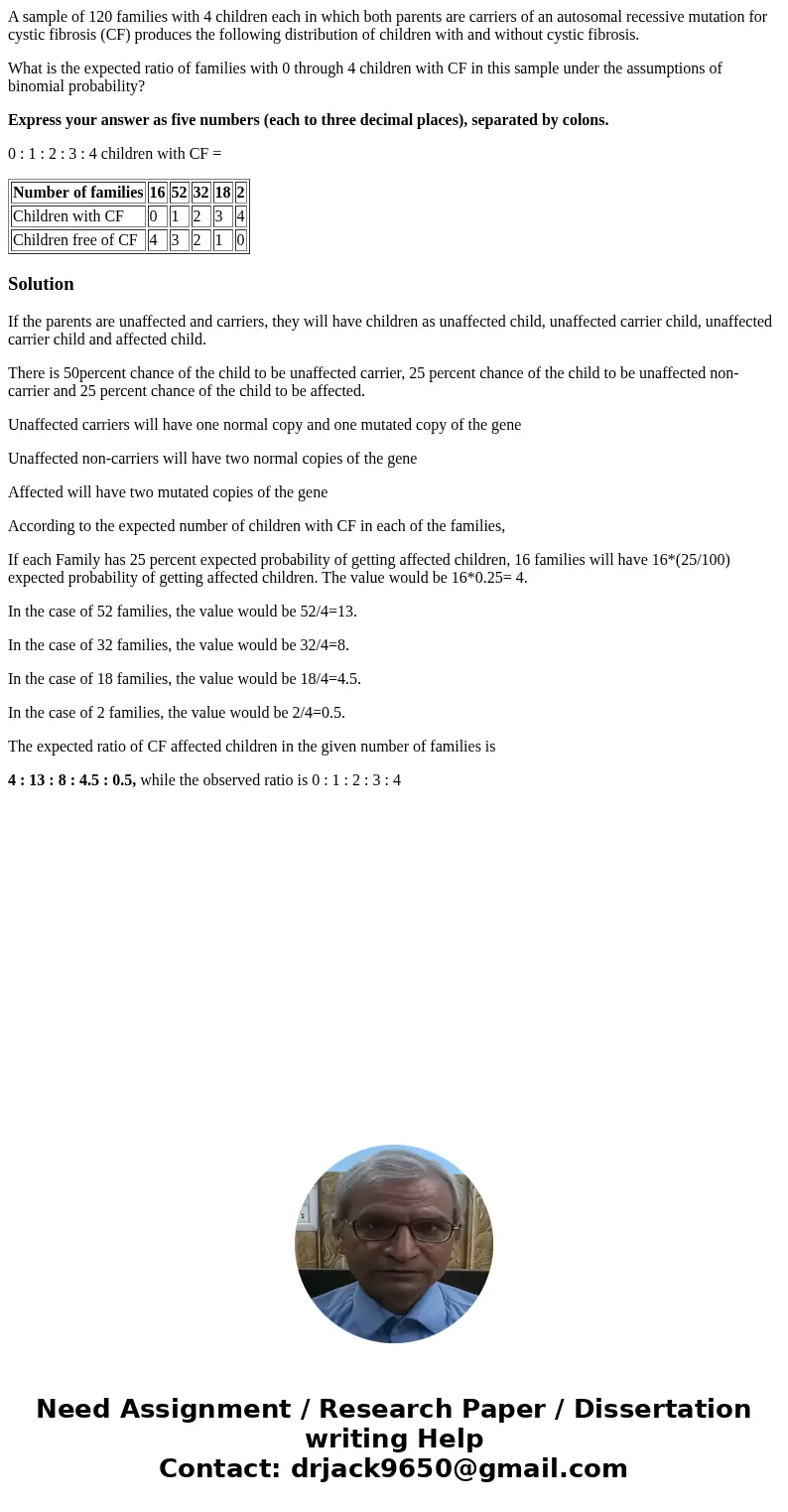A sample of 120 families with 4 children each in which both
A sample of 120 families with 4 children each in which both parents are carriers of an autosomal recessive mutation for cystic fibrosis (CF) produces the following distribution of children with and without cystic fibrosis.
What is the expected ratio of families with 0 through 4 children with CF in this sample under the assumptions of binomial probability?
Express your answer as five numbers (each to three decimal places), separated by colons.
0 : 1 : 2 : 3 : 4 children with CF =
| Number of families | 16 | 52 | 32 | 18 | 2 |
| Children with CF | 0 | 1 | 2 | 3 | 4 |
| Children free of CF | 4 | 3 | 2 | 1 | 0 |
Solution
If the parents are unaffected and carriers, they will have children as unaffected child, unaffected carrier child, unaffected carrier child and affected child.
There is 50percent chance of the child to be unaffected carrier, 25 percent chance of the child to be unaffected non-carrier and 25 percent chance of the child to be affected.
Unaffected carriers will have one normal copy and one mutated copy of the gene
Unaffected non-carriers will have two normal copies of the gene
Affected will have two mutated copies of the gene
According to the expected number of children with CF in each of the families,
If each Family has 25 percent expected probability of getting affected children, 16 families will have 16*(25/100) expected probability of getting affected children. The value would be 16*0.25= 4.
In the case of 52 families, the value would be 52/4=13.
In the case of 32 families, the value would be 32/4=8.
In the case of 18 families, the value would be 18/4=4.5.
In the case of 2 families, the value would be 2/4=0.5.
The expected ratio of CF affected children in the given number of families is
4 : 13 : 8 : 4.5 : 0.5, while the observed ratio is 0 : 1 : 2 : 3 : 4

 Homework Sourse
Homework Sourse